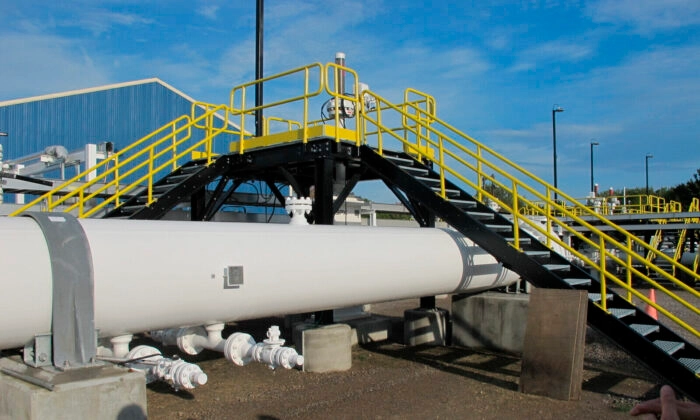More than 220 natural gas pipeline-related proposals across 22 states are among nearly 700 projects that could see accelerated approvals under President Donald Trump’s National Emergency Declaration.
Many are in oil- and gas-rich regions, such as Appalachia—Pennsylvania, West Virginia, Ohio, Kentucky, North Carolina, and Texas. Producers in Appalachia and Texas are pushing for more access to interstate pipelines to fuel growing demand for natural gas as the nation’s top electricity generator and as liquid natural gas for export.
Not included in the list of 220 proposals are “zombie pipelines” frozen or withdrawn in regulatory limbo from its approval queue.
Some—most notably, the president himself—are calling for exhuming several notable “zombies,” such as the Constitution pipeline in New York and TCEnergy’s Keystone XL.
“Come back to America, and get it built,” Trump beseeched TCEnergy in a February Truth Social post, calling on the Canada-based company to kickstart the proposed 1,200-mile cross-border pipeline it spent millions over nearly 15 years failing to get approved, promising, “Easy approvals, almost immediate start!”
After repeatedly expressing no interest in reviving the project since ending it in 2021, TCEnergy “spun off” its pipeline business to a subsidiary, South Bow. In February, both announced joint plans to expand their Big Sky Pipeline System that could incorporate some aspects of 2008’s XL proposal.
The 220 natural gas pipeline-related projects the Army Corps could waive through Clean Water Act hearings include renovations, repairs, expansions, and new digs; some have been in permit review for years.
Demand for natural gas to generate electricity is projected to significantly increase in coming years in response to a dramatic surge in electrification unfolding three-to-four times faster than grid operators and utilities planned as recently as two years ago.
Trump’s “drill baby drill” policy seeks to expand fossil fuel development, especially natural gas—the United States is the world’s largest producer and exporter—to lower domestic electricity costs and pay down the nation’s near-$37 trillion debt.
“We’re adding one customer every second of every day,” American Gas Association CEO Karen Harbert told utility commissioners during a February conference in Washington. “On the business side of things, we have 5.7 million businesses and we’re adding one every minute of every day.”
But as Energy Secretary Chris Wright said on March 10 at CERAWeek by S&P Global in Houston, before industry can drill more natural gas to meet this demand, “We’re going to have to build, baby, build more pipelines.”
“We know that this country has almost 100 years supply of available natural gas,” Interstate Natural Gas Association of America CEO Amy Andryszak told The Epoch Times, “but if you don’t have the capacity in the infrastructure—the pipeline infrastructure—to move it around the country, you’re going to run into real problems.”
Despite adding the most natural gas pipeline capacity in nearly a decade in 2024, industry leaders fear the nation’s sprawl of gathering, mid-stream, and distributor pipelines is not expanding fast enough, especially for Appalachia and Texas producers seeking to expand markets.
In a January forecast noting a significant uptick in electric utilities ordering more natural gas, market analyst Rystad Energy estimated gas pipeline networks in some areas may need to expand by 30 percent within a few years to absorb surging demand.
The Interstate Natural Gas Association of America estimates more than 2,400 miles of natural gas pipelines must be added each year, and 1,400 compressor stations built, by 2035 to satisfy natural gas demand.
Andryszak said her association’s 27 members own and operate 200,000 miles of interstate pipelines, two-thirds of the nationwide network, and are “very focused” on the need to quickly build capacity to move more gas.



